In today’s construction landscape, architects are no longer satisfied with the monochromatic, single-material building façade that dominated the look of commercial and multifamily residential buildings decades ago. Instead, they seek to push past what were previously considered to be design limitations, and they work to specify building materials that deliver a sophisticated, modern aesthetic, one that blends a variety of materials. This means combining the look of wood, metal and brick for buildings that might include a new school for a growing exurb, a high-rise residential condominium for discerning urban dwellers or a health care facility that aims to improve the level of care in the community.
At the same time, architects and specifiers must adhere to strict standards when it comes to the performance and energy efficiency of the building envelope, because it is the barrier to the outside world. How will the materials those professionals specify protect the inhabitants for the life of the building? How will it guard against moisture intrusion or mold? What R-value is it able to deliver when it comes to the building’s energy consumption in a variety of climates?
Traditional materials typically cannot deliver the energy efficiency required by modern building codes. Using those materials also comes with additional time for installation and, quite often, greater cost.
How can designers, contractors and specifiers best rely on the choices they make for flexible aesthetic cladding when it comes to durability and energy efficiency? How can those designers tap into the modern aesthetics delivered by mixed materials, yet ensure the cladding withstands the relentless forces of Mother Nature?
Building product manufacturers have risen to the challenge with the introduction of resin-cast shapes. The result: simulated brick and wood that deliver on the promise of a time-honored look with highly desirable performance and energy efficiency attributes.
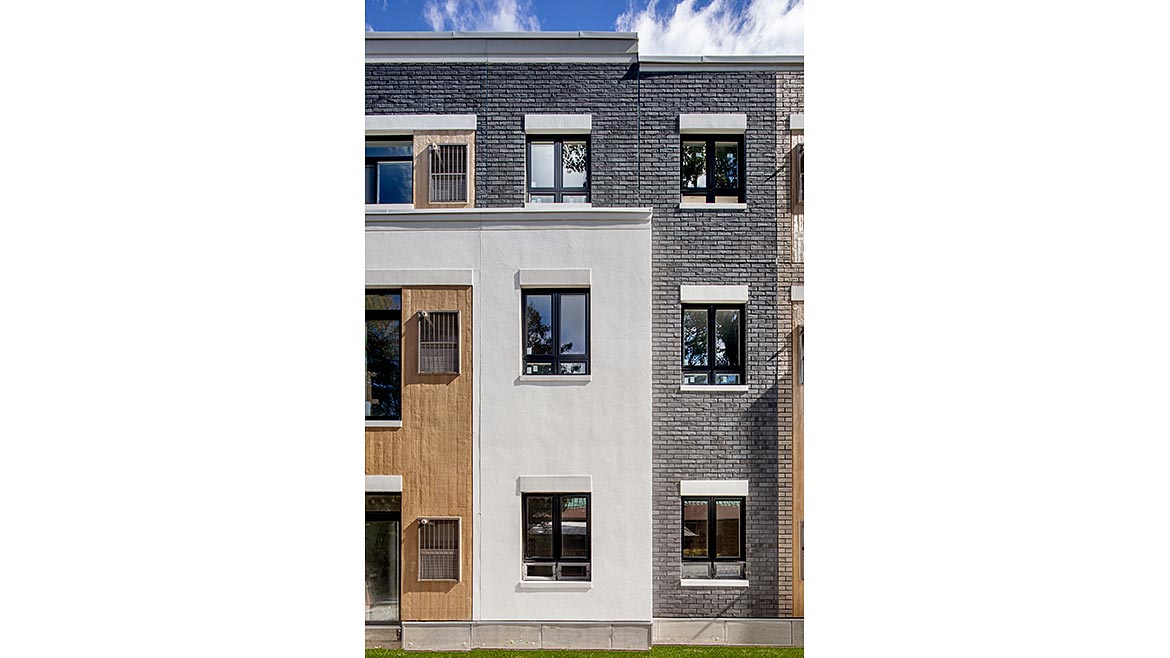 Combine
a beautiful lightweight, flexible, easy to apply, durable aesthetic,
and low utility bills using an engineered wall cladding system.
Combine
a beautiful lightweight, flexible, easy to apply, durable aesthetic,
and low utility bills using an engineered wall cladding system.
They’ve Got the Look
When it comes to the design of a building, curb appeal remains critical. What kind of look will the structure ultimately deliver? How will that look connect with the building’s purpose and its inhabitants? What impression will it make on those who visit the building?
Resin-cast shapes can deliver undeniable curb appeal based on how they are engineered. They are lightweight, flexible and highly customizable. They very closely mimic the look of traditional materials, making it a challenge for even the discerning eye to determine that the resulting facade is not made of traditional brick or wood. At the same time, the base material for resin-cast brick or wood enables architects to design buildings with curved bricks or wood, something not possible with traditional materials.
Resin-cast shapes give architects added aesthetic versatility. Wood shapes come in a variety of wood-grain patterns, avoiding the pitfall of duplicating patterns often seen in other cladding solutions. The material has depth, and the texture can be felt and seen. Similarly, resin-cast bricks can be made to match traditional brick textures and colors, while also being able to create unique looks.
Because of how they are made, resin-cast shapes enable designers to mix and match different looks without sacrificing on performance.
Delivering Durability: The Systems Approach
Resin-cast shapes are a key component of a fully engineered building enclosure system, ensuring the right components are in place from the start so the building envelope can withstand the forces of Mother Nature. Utilizing a building enclosure with control layers delivers durability, protection from the elements and a comfortable interior environment.
A smart, fully engineered system contains five control layer components in a single, tested system that works as one, delivering the aesthetic desired and the protection required.
The first layer is a vapor control layer that is permeable or impermeable, per the design specifications, to minimize condensation by controlling the flow of water vapor as it shifts from high- to low-pressure areas. Second is an air control layer that reduces energy and condensation loss by limiting the uncontrolled flow of air through the wall assembly. Next is a water penetration control layer that prevents water from entering the wall cavity and is flashed to the cladding’s exterior and a thermal control layer to mitigate energy loss and prevent thermal bridging. Last, there is a durable, water-shedding layer to protect against environmental elements, impacts, UV exposure, pollutants and more.
Installation Efficiency
Versatility and adaptability represent key value propositions to construction stakeholders throughout the chain—from the designer pouring over plans, to the contractor charged with installing the materials, to the building owner concerned about cost over-runs and the final product. Resin-cast shapes are custom-made in a controlled environment to deliver greater efficiency and accuracy.
Using resin-cast shapes, designers have the freedom to implement any aesthetic desired and to mix and match materials without comprising the performance of the building envelope. By specifying such materials, architects help to drive greater efficiency.
Consider the traditional construction scenario where wood and brick are specified for the building envelope. This means the project team must coordinate the shipment of these heavy materials to the job site. Then, one crew must carry, shape and cut lumber. Another crew would need to lay brick and mortar. All this of must occur after the other control layers have been installed separately by other trades. Taken together, this costs precious time and money.
Installing a building envelope system with resin-cast shapes is done by one trade, eliminating the potential for scheduling complications and simplifying transitions for a smooth installation process. Additionally, the streamlined process means a one-source warranty for any issues that arise. A single installer and manufacturer can address these issues.
Moreover, resin-cast shapes easily install over a variety of systems, from traditional EIFS to stucco to rainscreens. Resin-cast shapes are adhesively applied to the building envelope system using a non-cementitious adhesive product. There is no penetration of the building envelope with fasteners as there would be with traditional wood or brick installation, meaning the building envelope remains intact, reducing opportunity for thermal bridging, and air and moisture leaks.
With traditional materials, an aesthetic renovation or update would typically mean deconstruction of the cladding and rebuilding. Due to the lightweight nature of the product, resin-cast shapes can be applied over existing cladding that is structurally sound with a skim coat and 1/8-inch mesh layer under the adhesive. This translates into cost savings in the present and the future, reducing landfill waste and enabling a modern façade to stand the test of time.
Emphasis on Safety
Architects, contractors and building owners want to ensure the safety of the crews constructing the new developments, as well as future building occupants. Resin-cast shapes are user-friendly, offering a lightweight option for crews that eliminates the need to transport and carry heavy wood panels and bricks. One box of resin covers 75 square feet for the wood aesthetic and 30 square feet for the brick aesthetic, adding up to a facade that can easily be carried on a scaffold.
Additionally, the installation process is simple and quick for the crew. One person lays the adhesive and one person lays the shape, saving time, material and crew requirements. There is also no silica in the resin, so it can be easily cut with shears. The process does not generate sand or dust that is the usual byproduct when working with traditional materials.
Sustainability Performance
As energy codes become more stringent and the effort to reduce consumption is even more important for building owners, architects and contractors must look for building materials that help to meet performance requirements while enabling design visions to come to life. The thinner and lighter resin-cast shapes lower the carbon footprint of construction compared to the natural materials emulated, with less transportation and operational costs.
Additionally, manufacturers are improving product performance to maintain long life cycles and deliver a sustainable product to architects. Resin-cast shapes do not need to be replaced or repaired frequently. The ultraviolet-resistant coatings are engineered to resist cracking or chipping, and recoating requirements are minimal.
In essence, resin-cast shapes are designed to last for the life of the building and are tested for moisture intrusion and fire performance. When exposed to moisture, resin-cast shapes remain constant and will not falter, unlike natural wood, which will warp and expand.
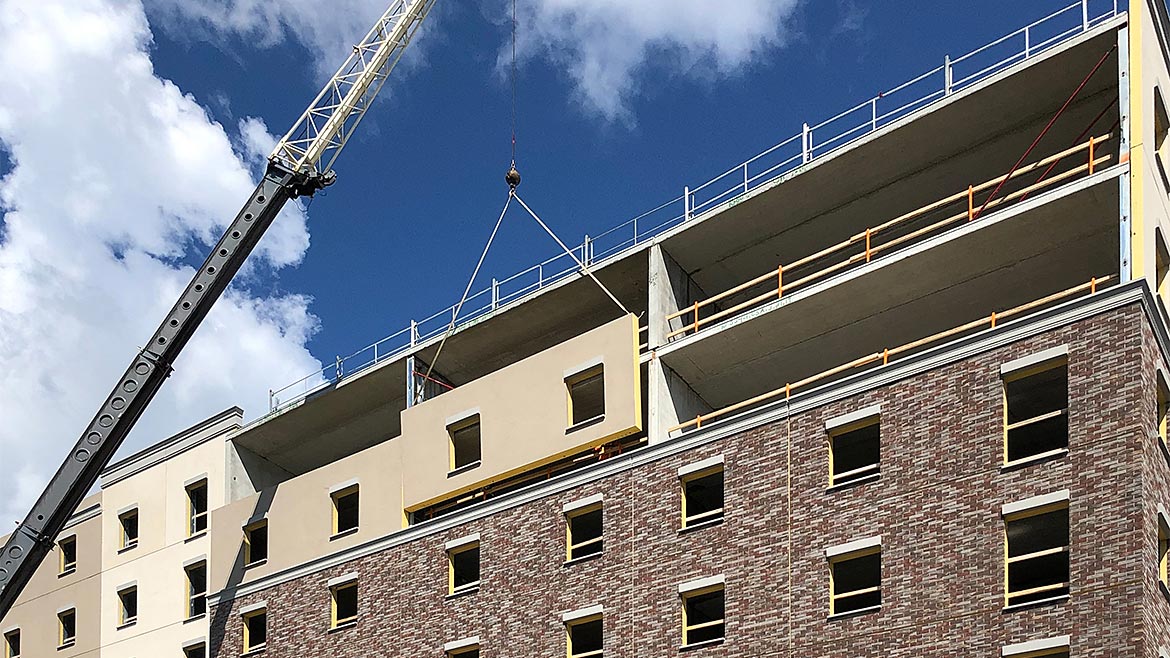 The product offered this affordable housing project comfort, style, and sustainability to a project that faced strict cost limits. The result: Visual appeal and an eco-friendly building.
The product offered this affordable housing project comfort, style, and sustainability to a project that faced strict cost limits. The result: Visual appeal and an eco-friendly building.
Case in Point: 111 Church Street
In St. Catharines, Ontario, designers sought a facade solution for an affordable housing project that would bring comfort, style and sustainability to the development that faced strict cost limitations. Investments in eco-friendly features, such as geothermal heating, had to provide maximum return on investment, and the simple structure had to be durable, long-lasting and look great.
The design team turned to the prefabrication engineers at SkyRise Prefab Building Solutions to create a thermally efficient building enclosure, using 75,813 square feet of continuous insulation panels to maximize thermal efficiency. For visual appeal, the team used a resin-cast brick to complete the project on time and create a building that would serve as a source of pride for tenants. The resin-cast brick delivered a time-honored look, emulating traditional brick in both texture and color. At the same time, the building capitalized on the energy efficiency and durability provided by the resin-cast solution.
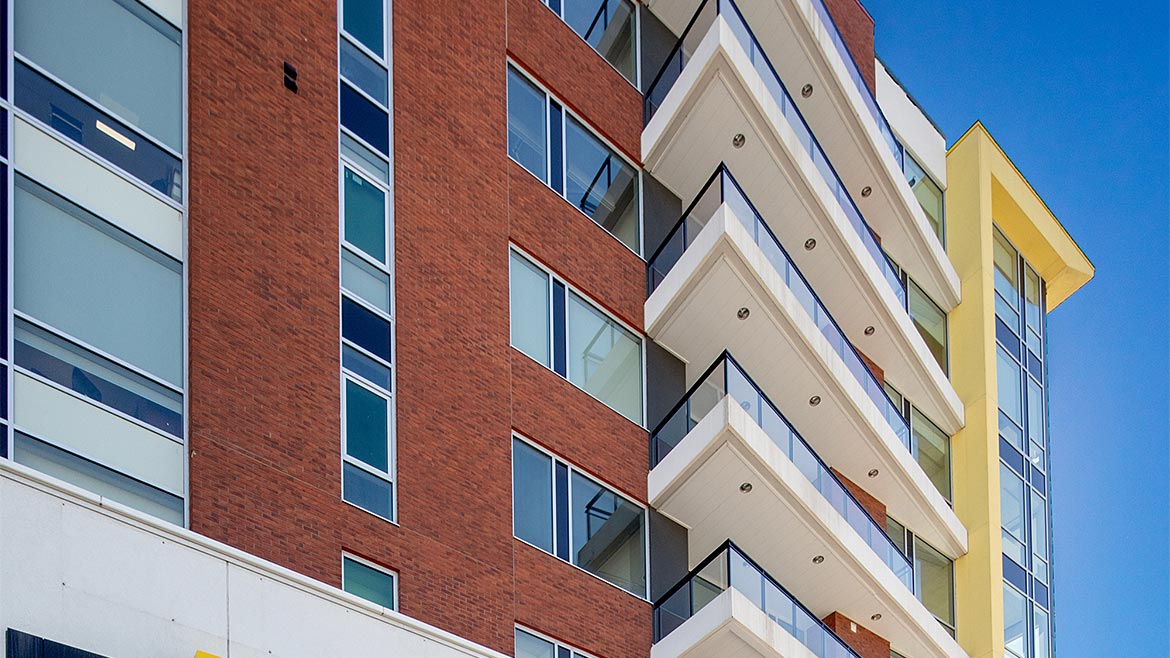 Resin-cast shapes met the diverse appearance requirements for this metropolitan Toronto project. It allowed for an easy installation due to the access limitations and higher elevations.
Resin-cast shapes met the diverse appearance requirements for this metropolitan Toronto project. It allowed for an easy installation due to the access limitations and higher elevations.
A Custom Facade for University Heights Professional Centre
Located in metropolitan Toronto, the University Heights Professional Centre brought limitations on access to the eight-story structure, aesthetic requirements in the redeveloped neighborhood and the need to include a drive-thru restaurant in the design plan. The ground floor had to be highly damage-resistant to withstand the wear-and-tear of constant traffic, while upper levels incorporated multiple finishes and faced constraints on space for installation in the busy urban district.
To meet the design intent and achieve performance requirements, SkyRise Prefab Building Solutions engineered, manufactured and installed 43,000 square feet of continuous insulation panels on the mid-rise building. The prefabricated panels met the demands of pedestrian and vehicular traffic, and simplified installation on higher elevations.
The continuous insulation panels also enabled resin-cast brick to be easily installed as a customized finished surface. The resin-cast brick facade integrated with the glass and metal materials used as features in the design, creating a unique building envelope aesthetic for the mixed-use structure.
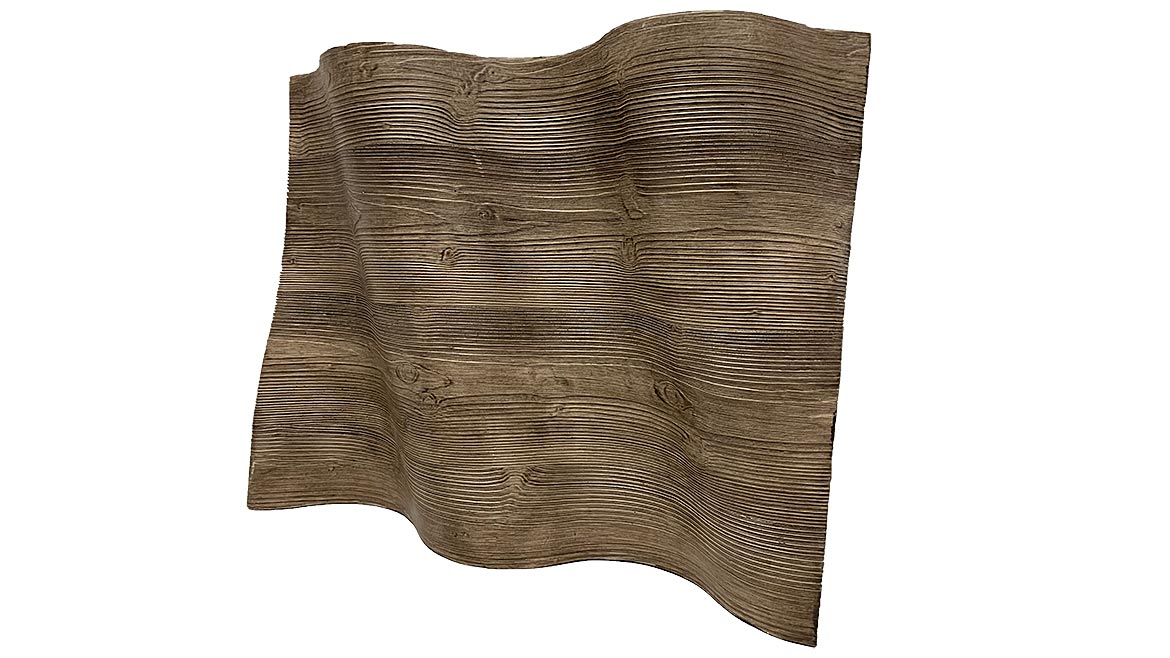 This product offers an authentic look and feel like traditional wood but is fully customizable and allows for a unique design option like this wave accent.
This product offers an authentic look and feel like traditional wood but is fully customizable and allows for a unique design option like this wave accent.
Without Limitations
Resin-cast shapes have ushered in a new world of possibilities for architects, designers, contractors and building owners seeking time-honored, traditional looks for the building facade that also deliver on the demand for greater energy performance. Part of a fully engineered and tested building envelope system, resin-cast shapes create the authentic appearance of brick, wood and stone without the limitations. Simultaneously, they meet or exceed the latest energy code standards for long-term building performance.
Factor in the increased efficiency in installation and greater certainty in long-term durability, and resin-cast shapes will continue to rank high in the consideration set when it comes to desirable solutions for external cladding. They leave behind the limitations of the past and take full advantage of the latest advancements in material science.



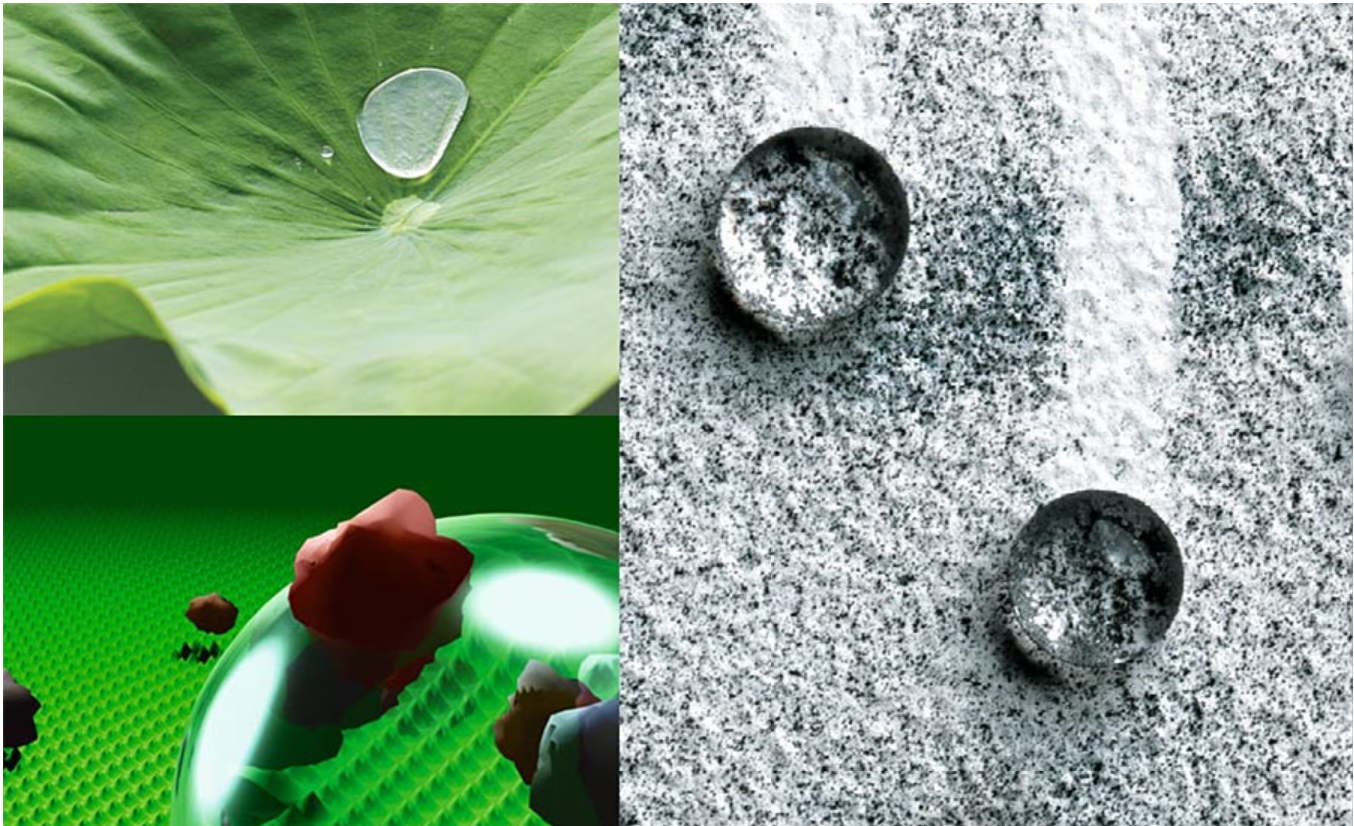
![WC0422-FEAT-ClarkDietrich-p1FT-CJ-EES[1].jpg WC0422-FEAT-ClarkDietrich-p1FT-CJ-EES[1].jpg](https://www.wconline.com/ext/resources/2022/04/12/WC0422-FEAT-ClarkDietrich-p1FT-CJ-EES%5b1%5d.jpg?height=200&t=1649794590&width=200)
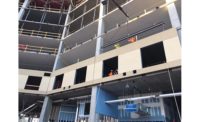
Report Abusive Comment